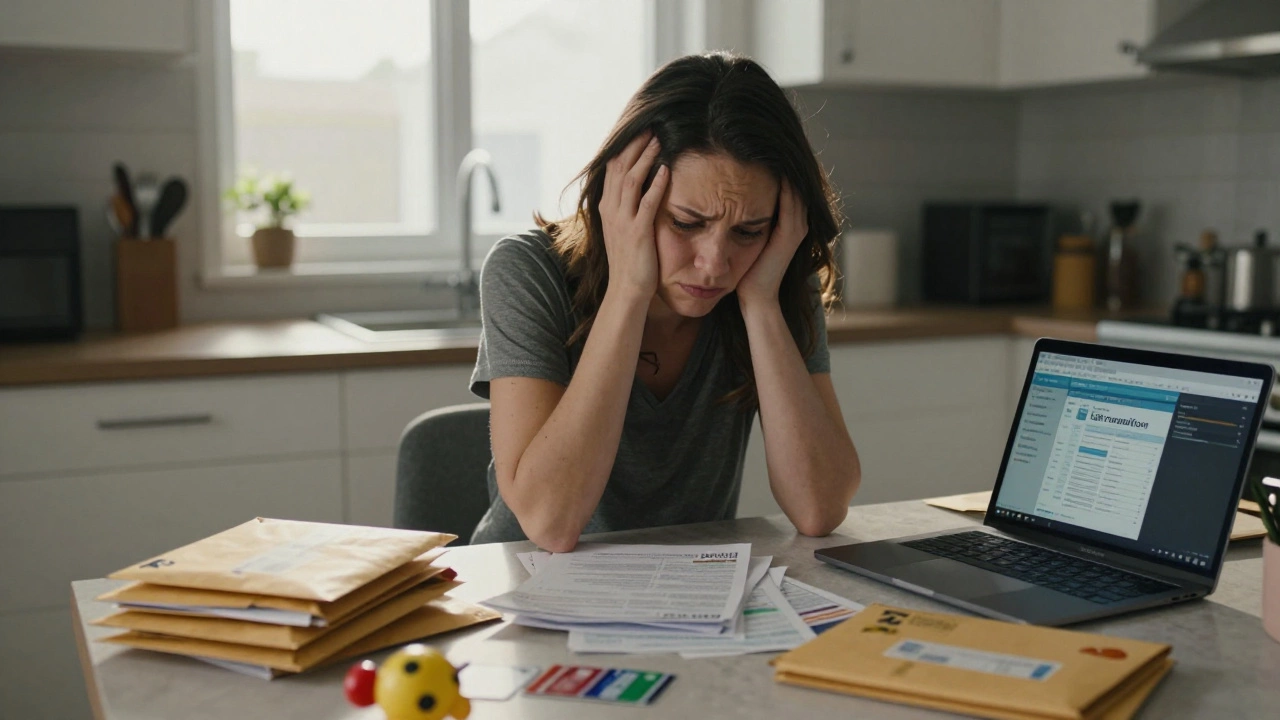Ever pondered what replacement cost in home insurance really means? It's more than just a line in your policy. It's about how much dough you'd need to rebuild your home from scratch if, heaven forbid, something catastrophic happened. Imagine a scenario—wild weather wreaks havoc, or a fire razes everything you own. Would your insurance swoop in to save the day, or would you be scrambling for extra funds? That's the crux of replacement cost.
Many folks get tripped up thinking market value and replacement cost are the same beasts. But, they're not. While market value dances to the tune of real estate trends, replacement cost sticks to the nuts and bolts of how much it takes to actually rebuild your crib. Do you have enough coverage to keep you covered? That's what we aim to explore.
- The Basics of Replacement Cost
- Why Accurate Valuation Matters
- Common Misconceptions
- Tips for Evaluating Your Coverage
- Making Sure You're Adequately Covered
The Basics of Replacement Cost
When we talk about replacement cost in home insurance, we're not just chatting about any old type of coverage. This specific type of coverage ensures that if disaster strikes, you're financially set to rebuild your home back to its former glory without dipping deep into your pockets. But how does it really work?
Simply put, replacement cost refers to the amount you'll need to reconstruct or repair your home with similar materials at today's prices. So, if your house was built in, say, 1995 using certain materials, the replacement cost will cover what those materials cost now—because prices have likely changed, right?
What's Covered?
It generally covers the structure of your home but can also extend to cover personal belongings if you've opted for that in your policy. That old-school vinyl siding might have been cheap back then, but today's prices for something comparable could be much higher. That's what this kind of coverage is about.
Actual Cash Value versus Replacement Cost
Here's where a lot of people get tangled up. There’s another term in insurance called actual cash value, which deducts depreciation from your payout. Imagine you have that 10-year-old TV; actual cash value might only get you enough for a second-hand set because it factors in the years of wear and tear. On the other hand, replacement cost would provide for a brand-new comparable model. Big difference, huh?
Calculating Replacement Cost
To figure out your home's replacement cost, insurers might use formulas or software, but the gist usually involves details about your property size, construction type, and materials. It's also crucial to review your policy annually or when you make any significant home upgrades—like that new gourmet kitchen you’ve been dreaming about.
| Factor | Influence on Cost |
|---|---|
| Home Size | Larger homes cost more to replace |
| Construction Materials | High-quality materials increase cost |
| Location | Local labor and material prices can vary |
To sum it up, knowing the basics of replacement cost can help you chat confidently with your insurance provider and ensure you're not underinsured. Nobody wants to face unexpected out-of-pocket costs when the chips are down!
Why Accurate Valuation Matters
Getting the replacement cost right is like hitting the jackpot in the tricky world of home insurance. It’s not just number crunching; it's setting up a safety net that can scoop you up when things go south. An accurate valuation ensures you're neither under-insured nor over-insured.
Undervaluing your property might leave you with a heart-stopping bill after a disaster hits. Imagine thinking you're covered, only to find out there's a massive gap in your policy. Yikes! Nobody wants to dip into savings or take on a loan to cover repair costs.
Consequences of Underinsurance
Getting blindsided by unforeseen expenses is a real bummer. You might end up paying out of pocket just to get your home back to square one. This is why ensuring that your property is evaluated accurately is paramount. Having a precise estimate can make the rebuilding process seamless, keeping unexpected financial hits at bay.
Avoiding Overvaluation
On the other side of the coin is over-insurance, where you're paying excessive premiums for coverage you might never need. Imagine coughing up more cash than necessary because your house’s value was overestimated. It’s money you could have saved or spent on something more fun, like a holiday or a new gadget.
To get the valuation right, insurers often rely on construction cost indexes or even a professional appraisal to gauge the current rebuilding costs. It’s also smart to periodically check if your coverage matches the ever-evolving construction market. Building costs can spike due to economic shifts or supply chain hiccups.
Regular Reviews Help
Regularly reviewing your insurance policy can save a heap of trouble. If it's been years since you evaluated your home’s replacement cost, it’s worth having another look. Updates or remodels on your property, like a kitchen extension, need to be accounted for to avoid any coverage shock.
Being aware and proactive about your home valuation can basically be the difference between dwelling on damages or getting back to your cozy life in no time.

Common Misconceptions
When it comes to home insurance, there's no shortage of myths floating around. Let's clear up some confusion!
Market Value vs. Replacement Cost
Many folks think the market value of their house is the same as the replacement cost. Nope, not even close! Market value includes land, location, and what someone is willing to pay. Replacement cost is just the bucks needed to rebuild your place from the ground up, minus the land.
Standard Policies Cover Everything
Big error alert here! Not all home insurance policies automatically provide full replacement cost. Some only cover actual cash value, which considers depreciation. Always double-check your policy details.
Assumptions on Deductibles
Some people assume that a lower deductible will mean paying less in the event of a claim. While that might sound logical, it usually means higher monthly premiums. It's critical to balance how much risk you're willing to take upfront versus on the back end.
Inflation Won't Affect Me
Another misconception is that inflation doesn't impact your replacement cost coverage. Wrong! Building materials and labor costs are often climbing. Ensuring your policy adjusts for inflation can prevent future headaches.
| Misconception | Truth |
|---|---|
| Market Value Equals Replacement Cost | Replacement cost is strictly construction costs. |
| All Policies Include Full Replacement | Some cover only actual cash value. |
| Standard Policies Cover Everything | Customization might be needed. |
It's essential to stay informed. Chat with your insurance provider to ensure you're not left with gaps in coverage, and remember, insurance doesn't have to be confusing, just ask the right questions!
Tips for Evaluating Your Coverage
Checking if you're adequately covered isn't something to fly through. Getting your home insurance right can save you heaps down the line. Here are some practical tips to ensure you're on track:
1. Review Your Policy Regularly
Your life changes, your policy should too. Got married? Spruced up the house with a new kitchen or deck? These bits can hike your replacement cost, so keep your insurer in the know.
2. Understand What Replacement Cost Covers
Does it cover just the structure, or are your personal belongings included too? Knowing the ins and outs can save you a nasty surprise.
3. Consider Professional Valuation
Sure, it's tempting to guesstimate, but getting a professional valuation ensures you've got the most accurate replacement cost on record. It usually pays off more than you'd expect.
4. Keep an Inventory
Jot down your stuff. Use your phone to take photos or videos. It's all about showing what you had if you ever need to make a claim.
5. Re-evaluate After Major Purchases
Got that grand piano or a fancy new couch? Re-assess your coverage. It's annoying, but it pays to be thorough.
6. Factor in Inflation
Prices climb over time. Make sure your policy keeps pace, so you're not left in the lurch if construction costs surge.
All set? Stress is a given when unraveling coverage details, but these steps make sure your property is shielded just right. Nobody wants to be short-changed post-disaster, so give your policy the due diligence it deserves.

Making Sure You're Adequately Covered
Alright, let's dive into the nitty-gritty of being really secured by your home insurance. How do you guarantee that when the unexpected hits, you're not left footing a massive bill? It's all about knowing the right steps and making savvy choices.
Evaluate Regularly
Your home isn't a static entity. You might have added a deck, upgraded the kitchen, or even remodeled the bathroom. All these changes mean the cost to rebuild has likely gone up. Make it a habit to evaluate your replacement cost coverage every couple of years or after any major renovation. Ensure it aligns with your home's current condition and improvements.
Work with Professionals
This isn't a guessing game. You need accurate numbers. Consider hiring a local building contractor or an independent appraiser to give you an up-to-date assessment of your home's replacement cost. They know the current prices for materials and labor, which keeps your estimates grounded in reality.
High-Value Items
Got fancy gadgets, rare collectibles, or costly jewelry? These items might not be fully covered under standard home insurance. Check if they need separate coverage or endorsements to ensure they're fully protected.
Inflation Protection
Inflation can sneak up on you. Luckily, many insurance companies offer an inflation guard you can add to your policy. This ensures your replacement cost coverage adjusts with the times, without you needing to monitor constantly.
Table of Adjustments
| Year | Suggested Coverage Increase |
|---|---|
| 2021 | 4% |
| 2022 | 5% |
| 2023 | 6% |
These percentages represent the annual increase in construction costs, which should be factored into your policy renewal discussions.
By staying proactive and informed, you can ensure that your home insurance does what it's meant for—keeping you safe without future financial woes.









